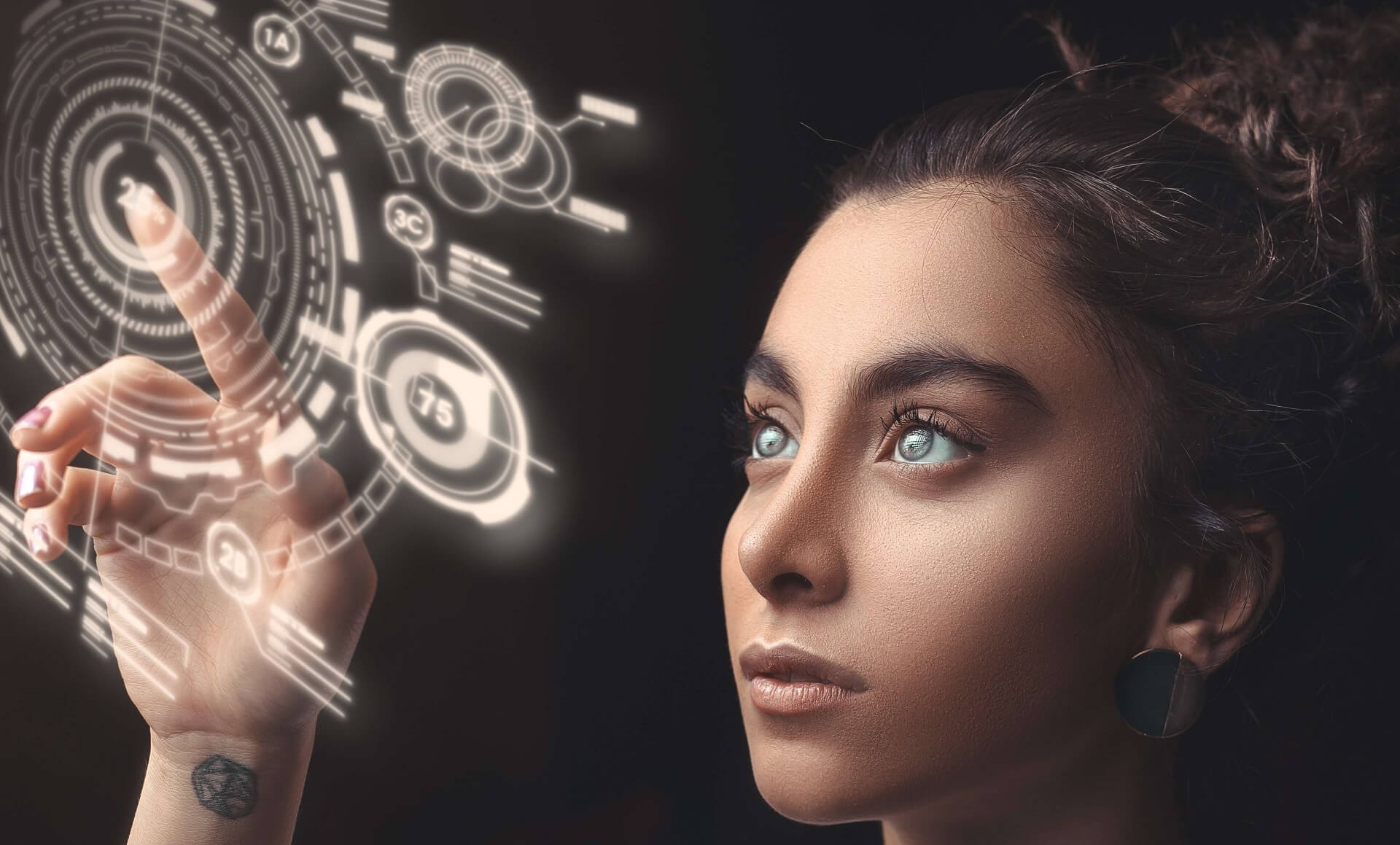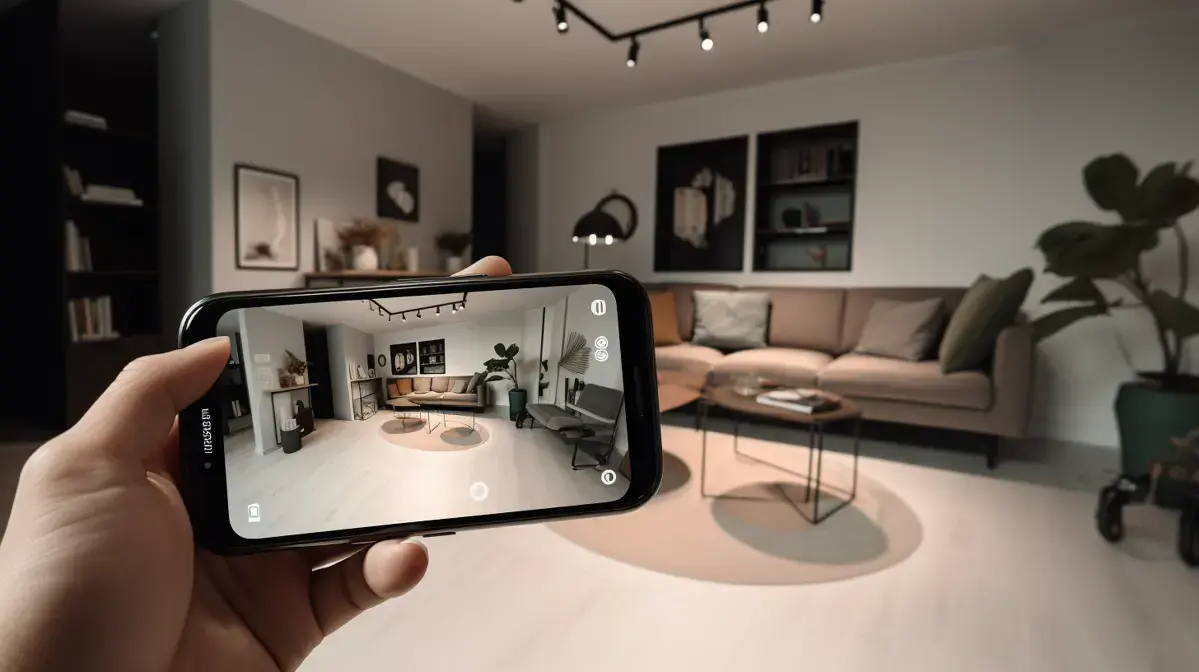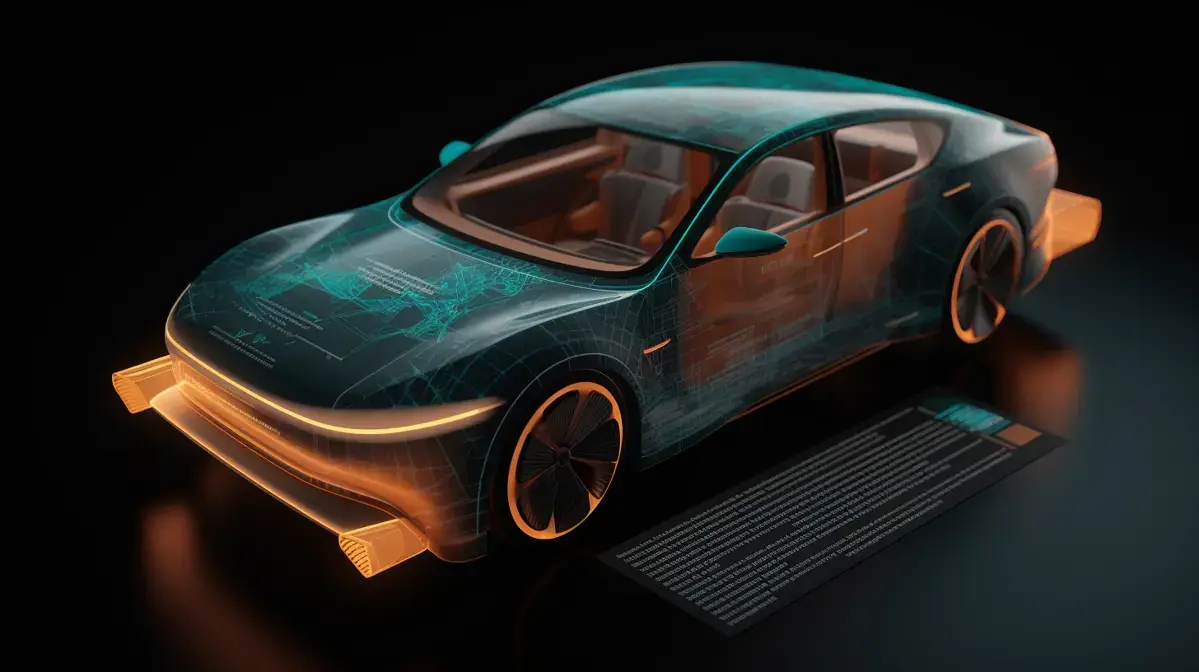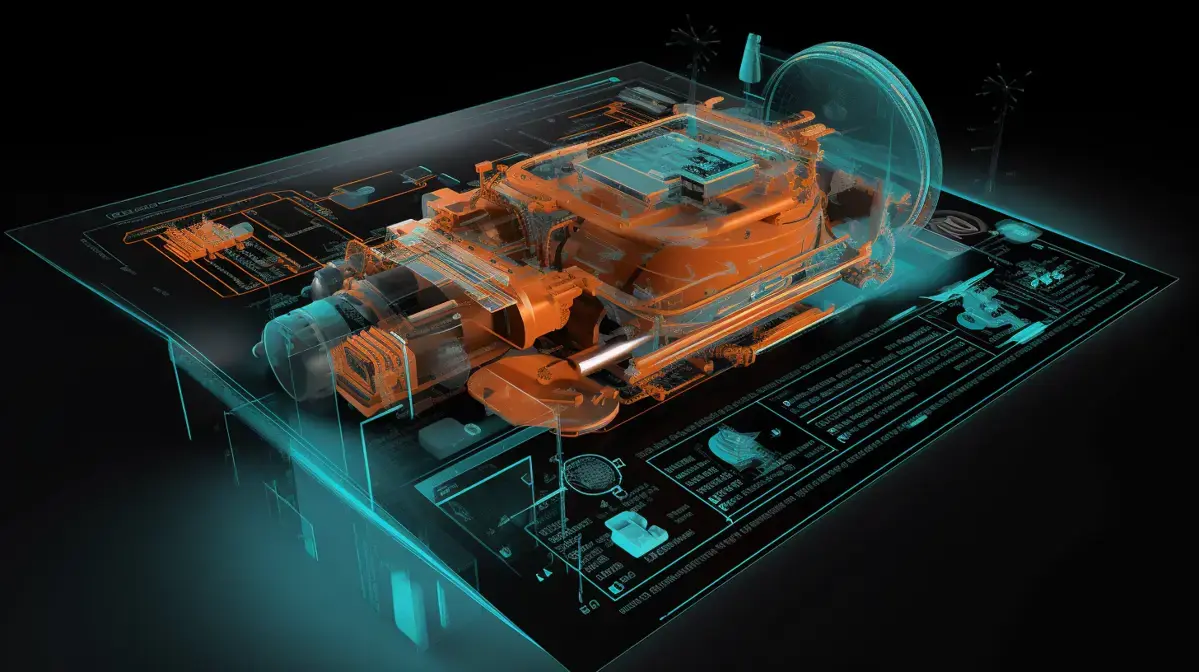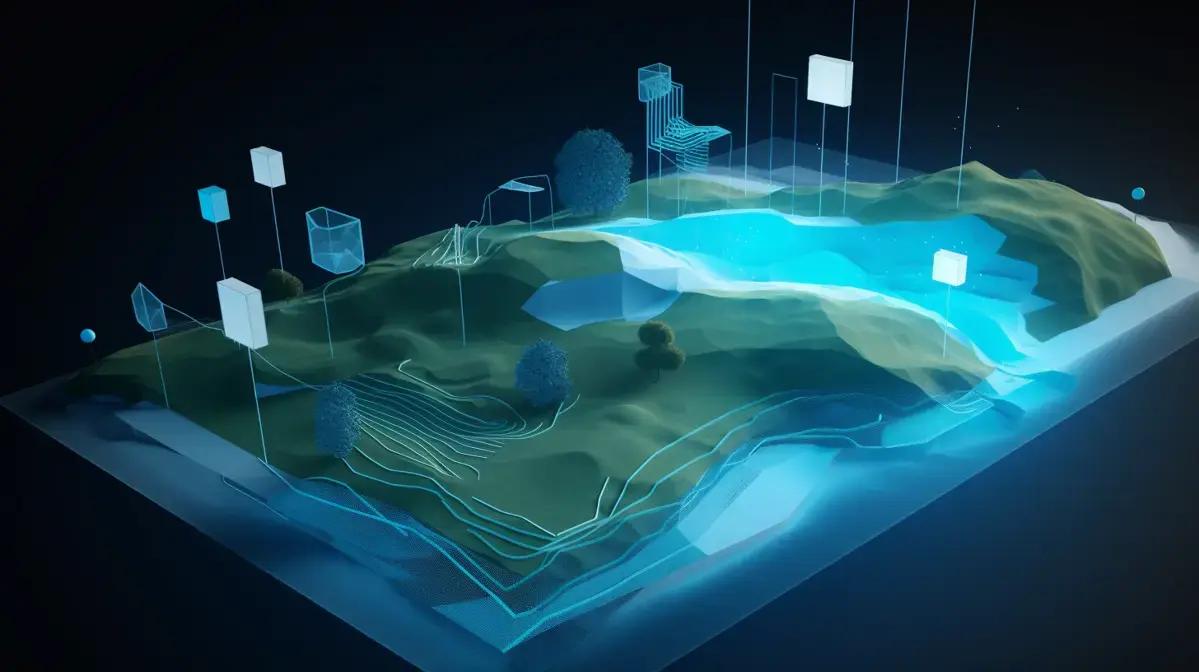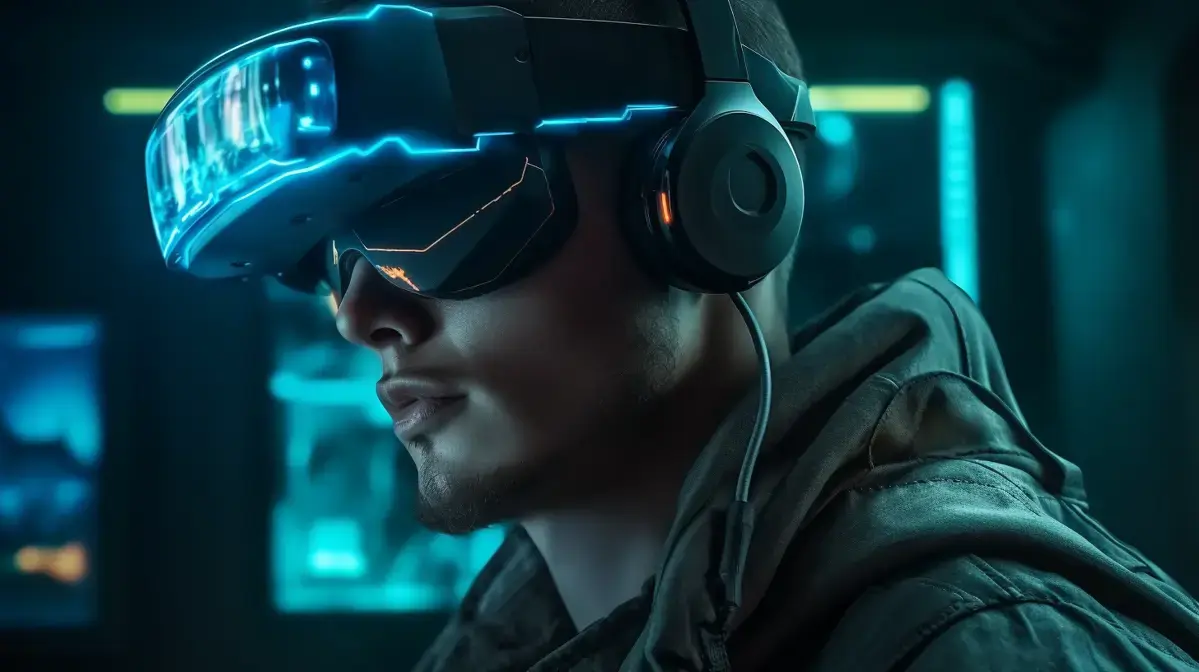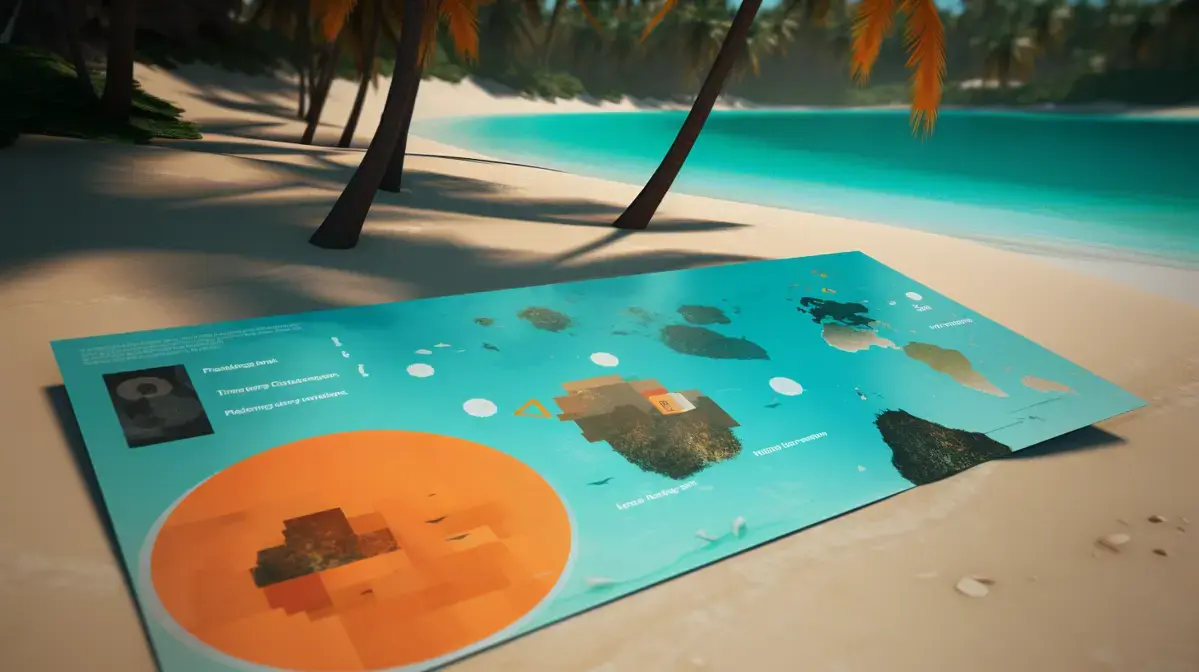Augmented Reality (AR) is set to revolutionize the architecture industry in the near future. An exciting performant feature of AR technology lies in its ability to create immersive experiences that allow architects and clients to visualize their designs as a three-dimensional model.
Through AR, architectural concepts can be transformed from a static blueprint into an interactive environment where users can walk through and explore spaces before they are built. This not only enhances collaboration between designers, builders, and clients but also helps reduce errors associated with miscommunication.
Moreover, not only does AR help improve communication among professionals involved in building projects but it also has practical applications for everyday use such as city planning or home renovation projects.
Additionally, using augmented reality is ideal for remote viewing of construction sites or property visits without leaving your office. With developments rapidly taking place on mobile devices such as smartphones with 5G capabilities – which provide high-speed internet connections – we expect more people will utilize this technology than ever before.
Read more about how Augmented Reality could transform your business at argeopin.com/augmented-reality/
Table Of Contents
- Key Points
- Best Practices for Implementing an Effective Augmented Reality Strategy in Your Business
- Conclusion: Embracing the Potential Benefits of Augmented Reality to Enhance Customer Engagement
- Introduction: How Augmented Reality is Revolutionizing Architecture
- Interesting Facts
- Advancements in Technology and Augmented Reality Capabilities
- Integration of Augmented Reality in the Design Process
- Benefits of Augmented Reality for Architects, Builders, and Clients
- FAQs
- The Impact of Augmented Reality on Project Visualization and Communication
- Challenges to Widespread Adoption of Augmented Reality in Architecture
- Future Predictions: How Will We See Increased Use of Augmented Reality in Architecture?
- Key Takeaways

Key Points
-
- Augmented reality technology is becoming increasingly important in architecture and construction.
- The use of AR can help architects and builders visualize designs more accurately, streamline the construction process, and reduce errors.
- In the future, we can expect to see advancements in AR technology that will allow for even more immersive experiences in architectural design.
- AR has the potential to revolutionize how buildings are designed, constructed and maintained by allowing users to interact with digital models of a building before it’s built or after it’s built.
Best Practices for Implementing an Effective Augmented Reality Strategy in Your Business
Augmented Reality (AR) is a technology that has been around for quite some time but never before has it been as relevant as it is now in the world of retail. The COVID-19 pandemic accelerated the shift from traditional brick-and-mortar stores to online shopping and AR will play a significant role in bridging this gap. Retailers have realized that they need to create engaging experiences for customers, both offline and online, and AR provides them with just that.
As an Augmented Reality expert from England, I can tell you firsthand how this technology allows retailers to provide shoppers with immersive experiences – where they can interact with digital objects superimposed onto their physical surroundings using their smartphones or tablets. Imagine trying on clothes virtually before making a purchase or placing furniture into your living room using an app – AR makes all of these scenarios possible.
One prime example is IKEA’s Place app which uses AR to allow customers preview furniture purchases at scale within real-life settings in order visualize what they would look like prior buying them. This not only enhances customer experience but also reduces product returns while offering convenience by eliminating guesswork when purchasing new items without having seen/fitting appropriately first-hand.
Augmented reality widens opportunities beyond what we could’ve imagined even 10 years ago: revolutionizing business models through omnichannel sales strategies which enable consumers unprecedented control over their own decision-making processes through augmented-reality interfaces such as mobile applications/devices.
Embracing the Potential Benefits of Augmented Reality to Enhance Customer Engagement
Augmented Reality (AR) has taken the world by storm in recent years, and nowhere is its impact more apparent than in retail. From virtual try-ons of clothes to interactive product displays, AR has revolutionized the way consumers shop.
As an English-born expert on all things AR-related, experiencing this transformation firsthand was a real thrill. The sheer excitement that I witnessed from shoppers as they put on their headsets or held up their smartphones and saw products come to life before their very eyes was palpable.
One example that stands out in my mind is the use of AR for cosmetic shopping. Seeing customers being able to virtually “try on” lipsticks, eyeshadows and other makeup items without having to physically apply them was fascinating – it almost felt like they had suddenly been transported into a magical world where anything was possible.
The potential applications for AR in retail are endless; from providing immersive experiences for customers while boosting sales figures at the same time – it’s no wonder why retailers big and small are jumping onboard with this technology with such enthusiasm.
All signs point towards Augmented Reality continuing its meteoric rise within retail – enhancing customer engagement levels whilst simultaneously driving revenue growth.
How Augmented Reality is Revolutionizing Architecture
Augmented reality has the potential to transform how we approach architecture. With its ability to overlay virtual information onto real-world environments, architects and designers can now visualize their projects in a more immersive and interactive way. This technology is changing the way we design buildings, making it easier for us to see how they will look before construction even begins.
The impact of augmented reality on architecture goes beyond just visualization. It also allows architects and builders to identify any potential issues with a project early on, saving time and money down the line. By creating virtual models that accurately reflect real-world conditions, AR enables architects to test different scenarios without having to build physical prototypes.
One example of this is using augmented reality during construction itself – workers can use AR headsets or tablets loaded with 3D models of what they’re building so that they can see exactly where each piece needs fixing or installing without needing blueprints or plans at hand. This leads not only faster builds but less mistakes made due errors like confusion over which materials are supposed be used – something very common before such devices started being deployed.
With advanced visualizations combined with AI systems working in tandem already assisting professionals out there (especially given current circumstances), it’s clear why many believe Augmented Reality really could revolutionize how people work within Architecture as well as other industries too if implemented correctly.
Interesting Facts
- The first recorded use of augmented reality in architecture was in 2008, when students from Columbia University used the technology to overlay digital models onto physical building sites.
- A study by Goldman Sachs predicted that the market for virtual and augmented reality technologies will be worth $80 billion by 2025.
- In addition to architecture, augmented reality is being increasingly utilized in industries such as gaming, education, and healthcare.
- The ability to visualize designs through AR can reduce errors and mistakes during construction projects. This saves time and money while improving project efficiency.

Advancements in Technology and Augmented Reality Capabilities
Augmented Reality (AR) has been a game-changer in various industries, and architecture is no exception. The concept of virtual overlays on real-world environments opens up endless possibilities for architects to visualize their designs and communicate them to clients more effectively than ever before.
With AR, architects can create interactive 3D models that allow them to view the design from different angles and scales. This technology brings blueprints to life by enabling builders, engineers, designers, and stakeholders alike a way of visualizing how a structure will look before it’s even built. It also allows for better collaboration throughout the design process as each stakeholder can provide immediate feedback based on what they see.
One exciting example of AR use in architecture was seen during the construction of Beijing’s Christain Dior Boutique store where an app enabled shoppers using their smartphones or tablets with synced-up tracking sensors placed around the space giving visitors access information about clothing collections through augmented reality displays while they walked around inside.
Integration of Augmented Reality in the Design Process
Augmented Reality, or AR for short, is a technology that overlays digital information onto the real world. It’s been around for some time now and is increasingly being used in various fields, including architecture. With AR, architects can create 3D models of buildings and then overlay them on top of the real-world view using their smartphone or tablet. This allows them to see what a finished building might look like before even starting construction.
The impact that this technology has had on architecture cannot be overemphasized; it has revolutionized the way architects design buildings. Prior to its advent, creating 3D models was expensive and time-consuming as it required specialized software and hardware. But with AR technology becoming more accessible today than ever before through mobile apps such as HoloLens by Microsoft or Magic Leap One Creator Edition glasses not only designers but also general consumers can interact with mixed reality environments in an intuitive fashion.
One example where augmented reality played an essential part is at One World Trade Center (WTC), which stands tall above the New York City skyline once again since opening after the September 11th attacks where large parts were destroyed by terrorist attacks against United States symbols, including Twin Towers located there previously. The design team utilized AR tech during every phase of development, from conceptualization to completion, ensuring they addressed all safety concerns while maximizing tenant comfort. They made use of augmented images when proposing final interior finishes so stakeholders could visualize how each space would appear upon build-out, saving time and money down the line if changes were needed later during the construction process.
Augmented Reality continues to enable architectural professionals worldwide to access new realms of innovation akin to science fiction movies, paving the path towards future human creations, from landing people on the moon to Mars, experimental habitats, and urban developments alike. And we’re just scratching the surface.
Benefits of Augmented Reality for Architects, Builders, and Clients
Augmented reality (AR) technology has been making great strides in revolutionizing the architecture industry. It is a game-changer for architects, engineers and designers alike who are able to interact with virtual 3D models, designs and plans that come alive right in front of them.
Imagine walking through a virtual building or being able to view every detail of a blueprint from all angles as if it was physically present before you. AR allows architects to see their creations in context and make critical design decisions more efficiently than ever before.
One example of how AR is transforming the industry can be seen at The Bartlett School of Architecture where students use wearable AR devices while on-site visits. This enables them to overlay digital designs onto physical structures so they can visualize changes ‘in situ’ easily without any physical intervention.
Another benefit is that clients are now better-able to visualize what their projects will look like thanks for augmented reality technology. For instance, an architect might take photographs or scans from various sites around town which allow stakeholders access into viewing possible outcomes without having any previous experience working within this field themselves.
Finally, augmented reality provides an accessible tool for mass communication, allowing ideas to be communicated between professionals regardless of geographic location quickly and efficiently, primarily through its interoperability features allowing file transfer via cloud seamlessly. This leads to wider-scale collaborations amongst communities globally, especially those interested in designing landmark buildings worldwide, such as Chicago’s Willis Tower project currently underway using advanced software systems powered by Virtual Reality Headsets capable of creating highly detailed architectural blueprints overlaid on real-world locations.
Augmented Reality continues changing landscape architecture forever providing even more creative opportunities exploring future visions combining digital tools spatial awareness creating entirely new worlds bringing into existence bold innovative pioneering concepts beyond mere imagination limits today.
FAQs
1. What is Augmented Reality?
A: Augmented Reality is a technology that superimposes computer-generated images onto the real world, providing users with an enhanced view of their surroundings.
2. How can architects use AR in their work?
A: Architects can use AR to create virtual models of buildings, allowing them to visualize and test designs before construction begins. They can also use it for client presentations and interactive exhibits.
3. What are some predicted trends in AR architecture?
A: Predicted trends include increased adoption of mobile devices for viewing 3D models, integration with Building Information Modeling (BIM) software, and the rise of wearable devices such as smart glasses.
4. Are there any challenges facing the implementation of AR in architecture?
A: Challenges include issues with accuracy and calibration when overlaying digital elements onto physical spaces, limitations due to hardware capabilities or compatibility issues between different devices/platforms/interfaces)
.

The Impact of Augmented Reality on Project Visualization and Communication
Augmented Reality (AR) has been gaining more and more attention in the world of architecture. It allows architects to visualize their designs on a level never possible before, enabling them to see their plans come to life as if they were standing right in front of them. The use of AR is revolutionizing the way architects work, from design through construction.
Incorporating AR into architectural design gives clients and stakeholders an immersive experience that can be hard to imagine with 2D renderings alone. Architects can walk around inside digital models while wearing AR glasses or using smartphones or tablets with specialized apps designed for this purpose. These tools allow users to superimpose virtual images over real-world environments, giving people a sense of how buildings will look when completed.
Thanks also goes out specifically towards programs like Sketchup Viewer which enables designers and stakeholders alike access up-to-the-minute designs- something crucially important according our Augmented reality expert. “Being able show off these intricate malleable models require flexibility within the software itself.” Therefore it’s imperative that software works flexibly alongside architects’ own visions providing open source coding – similar interactivity akin between Apple iOS developer resources.
There are endless possibilities when it comes designing with augmented reality technology; being able view different materials incorporated into your building structure prior actual implementation means less revisions needed down line overall greater efficiency speedier timelines better results AND happy clients too.
Challenges to Widespread Adoption of Augmented Reality in Architecture
Augmented reality (AR) is changing the way we perceive and interact with our surroundings. As an Augmented Reality expert, I have had the pleasure of witnessing how this innovative technology is transforming industries, including architecture. AR has brought a new level of creativity and efficiency to architectural design by enabling architects to create immersive 3D models that can be overlaid onto real-world environments.
One of the most significant advantages of AR for architects is that it enables them to visualize their designs in situ before construction even begins. Imagine being able to walk through a virtual version of your future building or structure before laying down any bricks or mortar. With AR, you can do precisely that. By using handheld devices such as smartphones or tablets or specialized head-mounted displays (HMDs), augmented reality allows architects and clients alike to explore interactive mixed-reality environments where digital objects are superimposed over physical ones in real-time.
Moreover, by incorporating Augmented Reality into their workflow processes, designers can collaborate more effectively with other stakeholders involved in bringing projects from concept through completion – including engineers contractors clients end-users – from anywhere around the globe at any given time.
Future Predictions: How Will We See Increased Use of Augmented Reality in Architecture?
Augmented Reality (AR) has taken the world by storm, and it’s not just for gamers anymore. Anyone who follows technology can see that AR is making its way into every corner of our lives. One industry that has caught on to AR’s potential in a big way is architecture.
Gone are the days when architects had to rely solely on drawings and models to convey their vision for a building or structure. With AR, they can create virtual 3D models that allow them to walk through buildings before construction even begins. This means they can identify design flaws or issues with functionality before anything is built – saving both time and money.
The best part about using AR in architecture? It’s incredibly immersive. Architects don headsets which transport them into their designs as if they were physically present inside the space itself. They get a true sense of what it will feel like from an emotional as well as sensory perspective; how light filters through windows at different times of day, how sound travels within spaces etc.
For instance, imagine standing inside your future kitchen remodel while actually still sitting on your couch at home trying out different configurations virtually using Augmented Reality apps such as IKEA Place app which allows users an opportunity visualise furniture in real-time within any room given- including options for customisation adjusting sizes especially perfect for small living spaces.
In summary, augmented reality offers architects new ways of creating designs where creativity meets technological advancements leading us all towards better-built environments one pixelated step at a time…
Conclusion:
In conclusion, the future of augmented reality in architecture is incredibly promising. With many technological advancements and new developments on the horizon, architects will be able to use AR technology to design more efficiently and effectively while providing clients with a more immersive experience.
From virtual walk-throughs to interactive models, augmented reality will continue to revolutionize how architects work. As we move forward into this new era of architecture, it’s clear that those who embrace AR technology early on will have a significant advantage over their competitors.
As such innovation continues at an exponential rate increasing pressure for firms globally – big or small -to invest in cutting-edge technologies like augmented reality has never been higher than now. In the end , The possibilities are endless when it comes down working with Augmented Reality (AR) as Architects can create stunning designs that really bring structures alive through digital visualization tools that offer spatial awareness in real-time without any previous need for physical construction which helps speed up project timelines whilst reducing costs .
Key Takeaways
- Augmented reality is becoming an increasingly popular tool in architecture, allowing architects to visualize designs and communicate them to clients more effectively.
- The use of AR technology can improve the accuracy and efficiency of construction projects by overlaying digital models onto physical spaces and streamlining communication between project stakeholders.
- In the future, it’s likely that AR will continue to play a prominent role in architectural design, with advancements such as 3D printing enabling more complex structures to be created using this technology.
